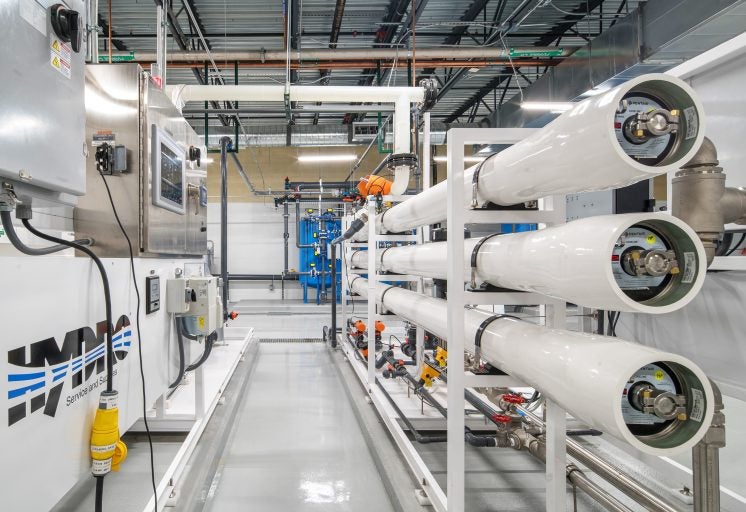A growing array of tools is filling the BRIDG wafer-fabrication facility in Osceola County, making the center increasingly useful to high-tech industries.
The University of Central Florida is a founding supporter of BRIDG (Bridging the Innovation to Development Gap), together with Osceola County and the Florida High Tech Corridor Council.
Since the opening of the state-of-the-art, 109,000-square-foot advanced manufacturing facility last March, BRIDG has acquired more than 35 high-tech 200mm wafer-processing tools to enable researchers to push the limits of advanced sensors, optics, photonics and advanced-system miniaturization manufacturing in order to offer industry solutions for next-generation nanoscale production.
The tools are made possible through multi-million-dollar investments from partners that also include the state and local government.
“Together, the partners in Central Florida built an amazing state-of-the-art facility that will support industry partners and also provide a robust platform to boost the competitiveness of our university partners in their pursuit of funded research projects”, said Chester Kennedy, BRIDG CEO.
“The key to maximizing the facility’s value is to continue adding tools that support leading-edge technology development. Each high-value tool, when installed and characterized, opens up new market potential from industry and enables additional research options, all while attracting more companies to have an enduring presence at NeoCity. These fully operational tools are the key to unlocking the economic transformation of the region,” he said.
Included in the BRIDG arsenal are tools for photolithography, etching, doping (implanting ions in materials), cleaning and dicing, which will allow manufacturers to create silicon chips for semiconductors and other nanoscale devices.
Semiconductor chips are the mainstay in the production of electronic circuits, which enable all our computerized devices and systems.
The fundamentals of creating chips boil down to tools that will either add or take away nanoscale-thin layers of specialized materials from an ultra-flat 200mm-diameter wafer of silicon, said Brett Attaway, director of business development for BRIDG. After a wafer has been processed with the tools, it is then cut into small chips that can be integrated into a system or product.
All that work requires not only state-of-the-art tools but also a facility with the necessary computer systems, gas and electric lines, hazardous materials systems, high quality water and airpurification systems, and anti-vibration technology to protect against any contamination or defect that could flaw the production process.
“We are operating a world-class fabrication facility, and it is imperative that we have a wide assortment of tools with the proper facilities infrastructure so our talented staff can make them dance together to create the desired chip recipes,” Attaway said.
There are many different chip technologies or kinds of chips. Many chips are comprised of integrated circuits created on the wafers to transfer and guide electrical currents to perform desired functions such as processing and transmitting data or storing information.
One of the first chip technologies that BRIDG is focusing on is Resistive Random Access Memory (ReRAM) that is designed to allow arrays of data memory bits that are made of a programmable resistive element instead of the typical transistor-based memories.
While ReRAM has been a hot topic among some chip makers in recent years because of its ability to offer memory capability at a lower cost and in a smaller package than other high-end computer memories, BRIDG is working with partners that have a different use in mind for ReRAM. This new area focuses on using the ReRAM technology for creating arrays of Physically Unclonable Functions, which can be used to help protect computerized data by creating a unique fingerprint or encryption method that is of particular interest to the Department of Defense and systems companies.
BRIDG is also acquiring tools to enable Micro-Electro-Mechanical Systems technologies that are used extensively in biotechnology, medical and communications fields among others because of its ability to create microsensors capable of determining temperature, pressure, chemistry, position and the presence of magnetic fields, radiation and other energy forms.
The tools at BRIDG can also be used for wafer-level system miniaturization schemes as well as silicon photonics, the design and fabrication of devices that generate, manipulate and detect light for use in high-performance computing and sensing.
While BRIDG plans to acquire additional tools during the next year to make it even more attractive for manufacturers from health, aerospace, defense and other industries, most of the core tools will be installed and qualified for use by this summer, said Fran Korosec, chief operating officer.
